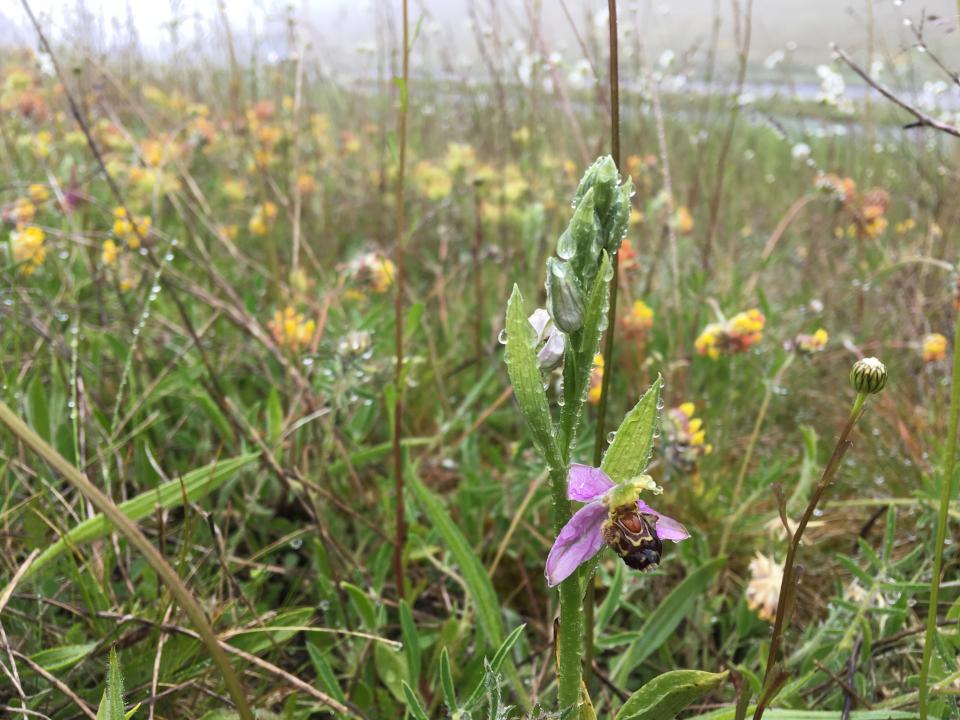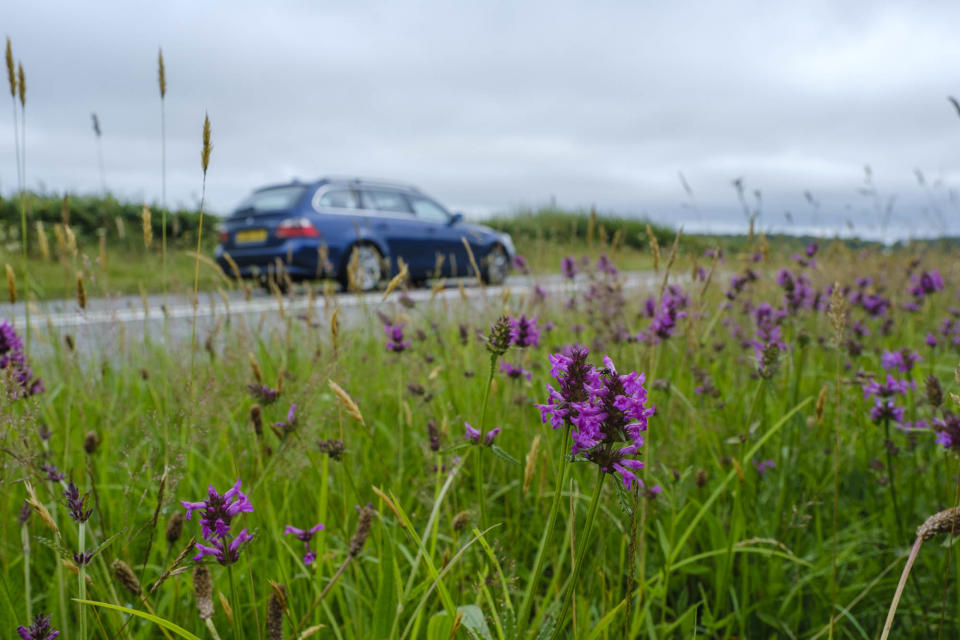Councils transform road verges for wildflowers as public backs fight for nature
Councils across England are transforming roadside verges to support wildflowers as pressure grows to reverse declines in wildlife, a Freedom of Information request has found.
Seven in 10 English councils are using mowing or management regimes alongside roads in their area to boost wildflowers and wildlife such as bees that depend on them, data gathered by the PA news agency suggests.
Conservationists say road verges are an overlooked but vital habitat, which are home to more than 700 species of wildflowers, including threatened orchids and other rare plants.

And as 97% of Britain’s traditional meadows have vanished since the 1930s, the grassy strips of land alongside roads are increasingly important for flowers and other wildlife – if managed correctly.
More than 190 local authorities answered the Freedom of Information request with details of their management regimes, 136 of which indicated they had some sort of scheme for wildflowers on road verges.
They include county councils which have reduced the number of times roadsides are mown each year, changed the timing of mowing or the width of verge that is cut, to benefit wildflowers across their road network.
Other local authorities are managing stretches as roadside nature reserves, or have implemented or are trialling wildflower-friendly mowing schemes in some areas.

Some are sowing perennial meadows or annual displays – which use colourful, often non-native flowers that benefit pollinators – on a limited basis.
The biggest driver for councils in changing the way they manage road verges is boosting biodiversity, particularly to provide habitat for pollinating insects such as bees, the responses show.
They are also reducing mowing to cut carbon emissions, save money, and often in response to calls from local residents to protect nature.
For some councils, the lack of resources and staff at the start of the pandemic last spring and summer led to less mowing – creating the impetus to make the change to a new regime.
While a number of local authorities said leaving grassy areas to grow long has prompted complaints about their untidy look, many have found critics outnumbered by residents who support the transformation to more natural, flower-rich verges.
Among those already taking action, 38 councils indicated they would be expanding their efforts or looking to see how they could.
A further 36 councils said they had wildflower-friendly plans for 2021 or beyond or were considering them, while only one in 10 did not indicate any action or plans.
Dr Trevor Dines, botanical specialist with wildlife charity Plantlife, which has campaigned for the rural road network to be managed for wildflowers since 2013, said the figures are “superb”.
While many of the efforts by councils are small-scale, Dr Dines welcomed any moves to boost wildflowers on the way to managing the full road network for nature.
Plantlife petition calling on all councils to manage #RoadVerges better for nature just overtook 120,000 signatories. Pls SIGN & SHARE to show you care! https://t.co/qzeXfTlyiU @TheMontyDon @ChrisGPackham @M_Z_Harrison @RobGMacfarlane @IoloWilliams2 @DrTrevorDines @katefpetty pic.twitter.com/Ey0PaSkx3L
— Plantlife (@Love_plants) February 6, 2021
He said: “Any little step along the way is a win because it is better than what was there before.”
But he urged county councils who are only focusing on a small number of roadside nature reserves to unlock the potential across all the rural road network – which could support billions of flowers nationwide – with a mowing regime that helps wildflowers thrive.
Plantlife says verges should be managed like ancient meadows, with less and later mowing that allows flowers to set seed.
This boosts flowering plants and supports an array of insects, small mammals and birds, as well as reducing fuel costs and carbon emissions.
The species-rich verges which result are better at storing carbon and capturing other pollutants, and Dr Dines said they also bring joy to people.

“For most people, the daily contact with wildflowers will be on their commute to work; passing those same verges each day, you get to know and love that display of cowslips, that display of oxeye daisies, that swathe of yellow ladies mantel, or even orchids if you’re lucky enough to spot those in the road verge.
“They look spectacular and they bring a lot of joy.”
While the focus of Plantlife’s campaign so far has been on rural verges, it will also be turning to urban areas, where the FOI shows a number of cities and towns are already taking action to transform at least some of their roadsides for wildflowers.
David Renard, environment spokesman for the Local Government Association, said: “Councils recognise the benefits of green space and biodiversity in our towns, villages and across local roads.
“Encouraging wildflowers on road verges and any common space is an excellent way to attract pollinating insects as well as brighten up the local environment, as long as a clear line of visibility is maintained for road safety.”

 Yahoo News
Yahoo News 
